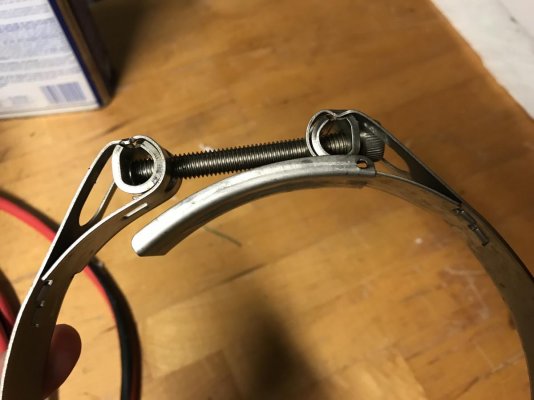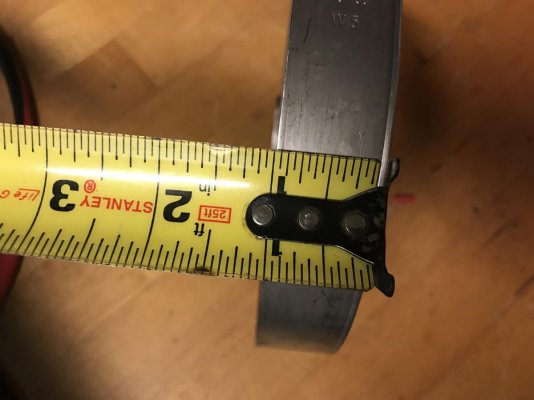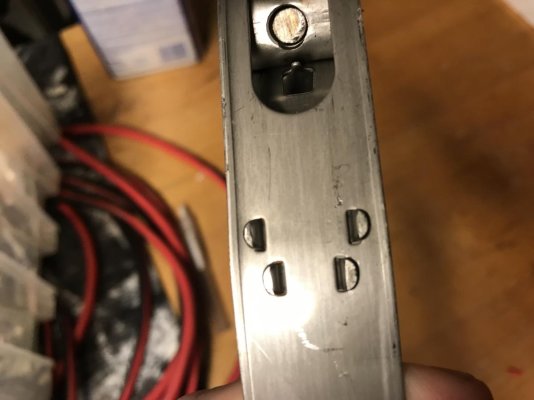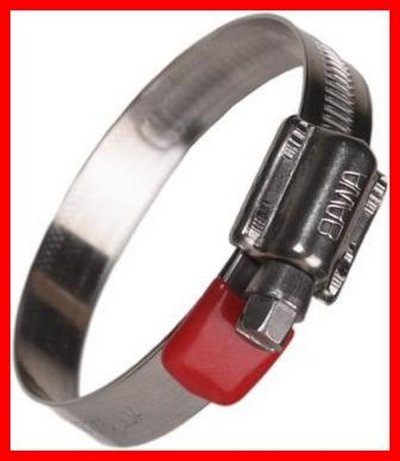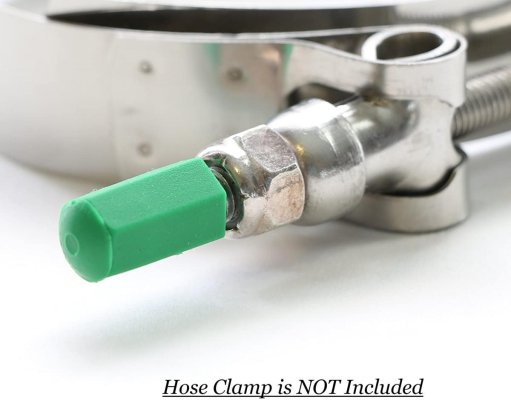Mike Negley
Veteran Member
- Joined
- Jul 13, 2014
- Messages
- 42
- Location
- US
- Vessel Name
- Yankee Peddler
- Vessel Make
- Grand Banks Eastbay
One day I took my boat out for a short ride with several friends and at the end of the trip I ran it up to full WOT as I do at least once a month to check the performance and temperatures. This time I had a huge surprise when alarms went off and scared all the guests. My alarm panel reported high temperature on one engine, but I shut down both. I threw out an anchor and made a quick trip to the engine room. I have snap-disc sensors at the exhaust on each engine which report three levels of high temperature. On this occasion it was Code Red! The problem was a raw water hose from the pump that had slipped off the pipe into the engine cooling system. The engine room was a hot mess and after it had cooled down enough to inspect the hose I saw it was a broken hose clamp and the break was on the back of the pipe where it was hard to see and get to. It had corrosion which I had overlooked. It was a quick fix since I keep a good supply of replacement hose clamps onboard and a good time to discuss this subject.
As simple as they are, hose clamps are critical to marine engines, and are prone to breaking and corrosion. Everybody knows to buy stainless, but often it is only the band, but not the screw. Take a magnet when you go shopping. There are two levels of stainless. 304 alloy is medium and okay for most applications, and 316 is the best and should be used in wet areas like the shaft log. Since hose clamps were invented and patented in Europe they retain their sizes in metric making it a little more difficult to choose. You can mark your spares in inches if you wish, but there is a tendency to buy oversize, which produces tails with sharp edges and corners waiting to cut your hands. There are hose clamp tail-guards available called Hose Clamp-Aids available at Amazon. You can also use wire heat shrink.
A major difference is the way the perforated thread is made. Initially they were all perforated and this was a major weakness and where corrosion usually starts and was cause for over tightening, too. They are now available embossed – a big improvement.
In addition to the standard hose clamp design, there are two more. One is the Constant Tension, which is most often used with fiberglass pipe where the pipe size changes due to changes in temperature. These have an internal spring which prevents crushing. The second type is the T-bar clamp, which is available in longer and wider sizes and are stronger. These are for larger connections and they also have protruding bolts that can snag clothes and cut hands. Shrink wrap works well here, too.
Now let’s look at tightening hole clamps because it is important, they are easy to over or under tighten. There is such a thing as a torque screwdriver A Full size clamp is generally torqued to around 30 to 50 inch-pounds lbs. (1/12th of a foot pound). Beware of perforated bands which are weakened by the holes and stretching them invites corrosion. Marine hose clamps normally have both a slotted head and a hex head. A large enough screwdriver for the necessary torque is often difficult to get to the screwhead and mor difficult to feel the pressure applied. I much prefer a ¼ inch socket wrench with a magnetic socket drive to prevent lost drivers which full under the engine. You can adjust the torque by holding the wrench close to or away from the clamp and you have the choice of a right angle or straight connection depending upon the adapters. I also use a small battery powered screwdriver like the Apollp with a Two-position pivoting handle for access to tight places and speeds up the process. A flexible screwdriver can also be very helpful in difficult to reach places.
As simple as they are, hose clamps are critical to marine engines, and are prone to breaking and corrosion. Everybody knows to buy stainless, but often it is only the band, but not the screw. Take a magnet when you go shopping. There are two levels of stainless. 304 alloy is medium and okay for most applications, and 316 is the best and should be used in wet areas like the shaft log. Since hose clamps were invented and patented in Europe they retain their sizes in metric making it a little more difficult to choose. You can mark your spares in inches if you wish, but there is a tendency to buy oversize, which produces tails with sharp edges and corners waiting to cut your hands. There are hose clamp tail-guards available called Hose Clamp-Aids available at Amazon. You can also use wire heat shrink.
A major difference is the way the perforated thread is made. Initially they were all perforated and this was a major weakness and where corrosion usually starts and was cause for over tightening, too. They are now available embossed – a big improvement.
In addition to the standard hose clamp design, there are two more. One is the Constant Tension, which is most often used with fiberglass pipe where the pipe size changes due to changes in temperature. These have an internal spring which prevents crushing. The second type is the T-bar clamp, which is available in longer and wider sizes and are stronger. These are for larger connections and they also have protruding bolts that can snag clothes and cut hands. Shrink wrap works well here, too.
Now let’s look at tightening hole clamps because it is important, they are easy to over or under tighten. There is such a thing as a torque screwdriver A Full size clamp is generally torqued to around 30 to 50 inch-pounds lbs. (1/12th of a foot pound). Beware of perforated bands which are weakened by the holes and stretching them invites corrosion. Marine hose clamps normally have both a slotted head and a hex head. A large enough screwdriver for the necessary torque is often difficult to get to the screwhead and mor difficult to feel the pressure applied. I much prefer a ¼ inch socket wrench with a magnetic socket drive to prevent lost drivers which full under the engine. You can adjust the torque by holding the wrench close to or away from the clamp and you have the choice of a right angle or straight connection depending upon the adapters. I also use a small battery powered screwdriver like the Apollp with a Two-position pivoting handle for access to tight places and speeds up the process. A flexible screwdriver can also be very helpful in difficult to reach places.

